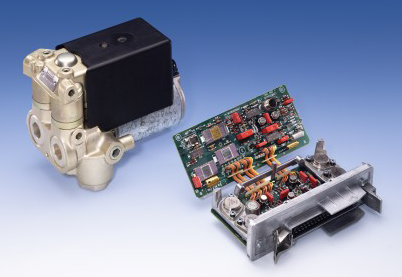ADR - Accident Data Recorder

Black Box for Formula 1 Cars. The FIA has fitted Accident Data Recorders (ADR) to all Formula1 cars since 1997, and also fit them to Formula 3000 and GP2 cars from 2000.
Data is recovered, where possible, from all incidents where control of the car has been lost, and the car either impacts another car, or leaves the track and is arrested in a run off area, or impacts a barrier.
FIA Accident Data Recorders (ADR), stores data from all the car’s key sensors and two FIA-specific accelerometers. These allow the FIA to use the ADR as an aircraft-style black box recorder to gather data on accidents. Should the car be in a major crash with f0rces exceeding 18 g, the ADR will trigger an medical warning LED light on the cockpit top to warn marshals of the severity of the accident, to allow them to take appropriate care with the driver.
3-axis, high-g (\mP250g) and low-g (\mP50g) accelerometers, car speed, throttle and steering, the lap marker, and from 2000, yaw rate are recorded. The data is analyzed to determine the deceleration on the track and the performance of circuit safety features such as run-off areas and barriers.
It is sometimes possible to determine the cause of the loss of control from the data available. The data is used to compute deceleration rates for use in the FIA's Circuit and Safety Analysis System (CSAS) for the assessment of circuit safety features, assess barrier and car impact performance, and provide data for accident reconstruction and modelling.
A Severity Index Coefficient (SIC) has been developed to enable impacts to be assessed quickly for their potential to cause head injuries, in order to rate them according to their need for fuller analysis. I cannot stress enough how important these tiny measurements are when it comes to determining the damage that is caused to the driver.
And FIA 2014 technical regulations stipulate:
8.8 Accident data recorders (ADR) :
8.8.1 The recorder must be fitted and operated :
- In accordance with the instructions of the FIA.
- Symmetrically about the car centre line and with its top facing upwards.
- With each of its 12 edges parallel to an axis of the car.
- Less than 50mm above the reference plane.
- In a position within the cockpit which is readily accessible at all times from within the
cockpit without the need to remove skid block or floor.
- In order that the entire unit lies between 30% and 50% of the wheelbase of the car.
- Via anti-vibration mountings giving a clearance of 5mm to all other objects.
- With its connectors facing forwards.
- In order that its status light is visible when the driver is seated normally.
- In order that the download connector is easily accessible when the driver is seated
normally and without the need to remove bodywork.
8.8.2 The recorder must be connected to two external 500g accelerometers which are solidly bolted
to the survival cell, on the car centre line, using four 4mm bolts. One must be as close to the
nominal car centre of gravity as practical and the other as far forward as possible inside the
survival cell. The forward accelerometer may be mounted to the underside of the top surface
provided it is solidly bolted to a structural part of the survival cell.
8.8.3 The recorder must be powered from a nominally 12V supply such that its internal battery can
be recharged at all times when the car's electronic systems are powered and when the car
systems are switched off, but a jump battery or umbilical is connected.
8.8.4 An ADR and two accelerometers must be fitted to every car at all times during an Event and at
all tests attended by more than one team.






